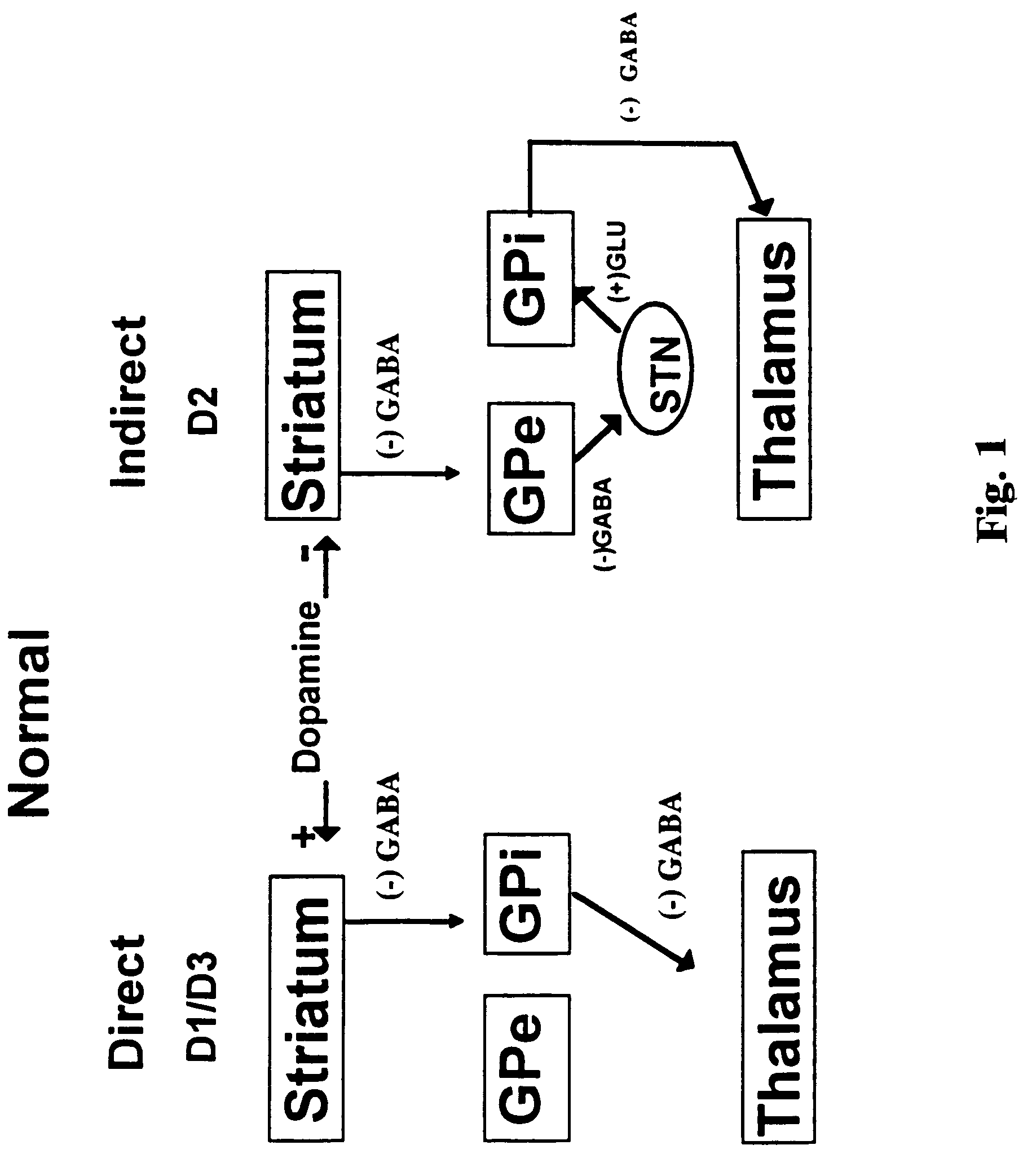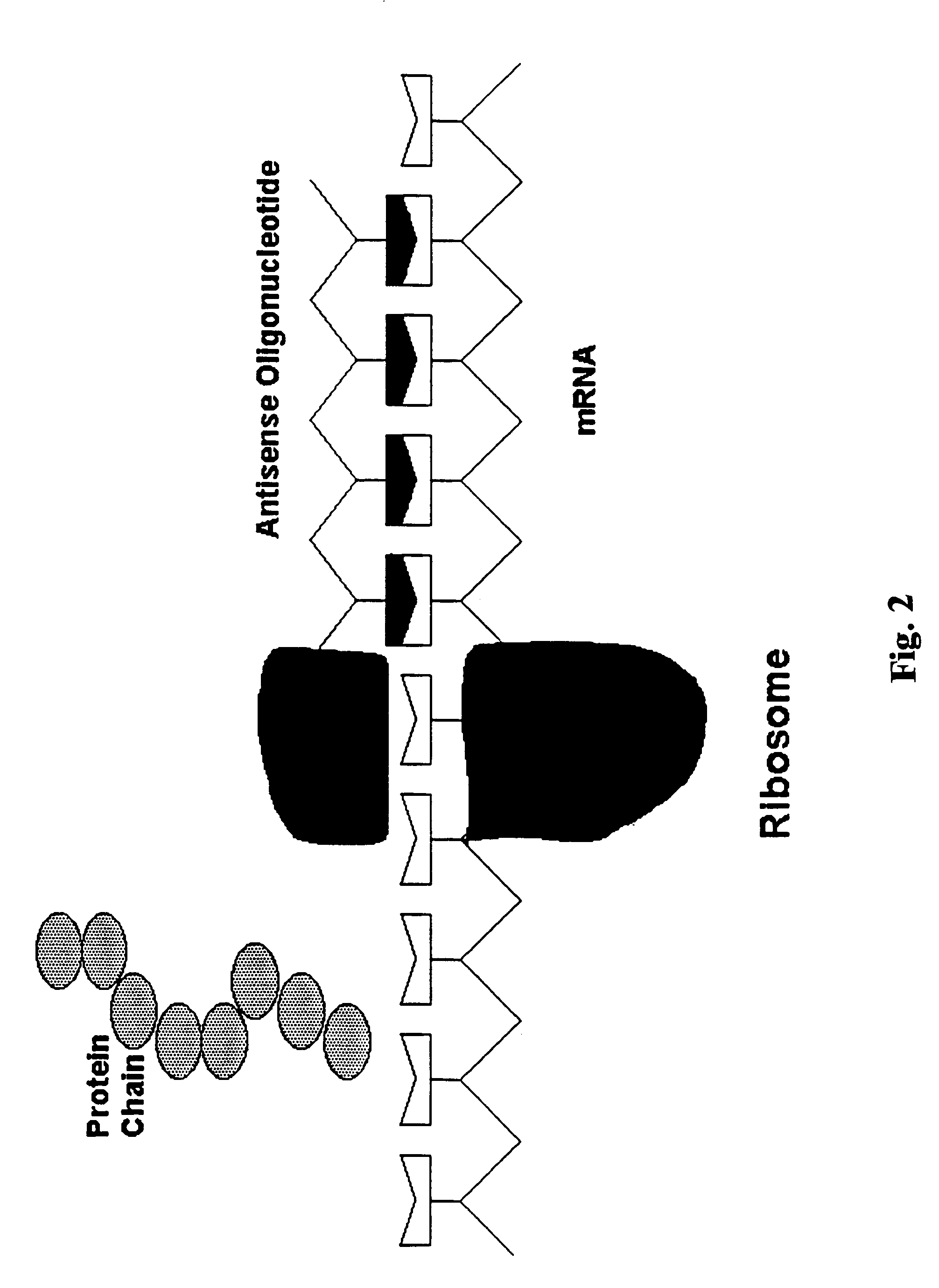Treatment of Parkinson's disease with oligonucleotides
a technology of oligonucleotides and parkinson's disease, applied in the field of gene therapy, can solve the problems of dementia and other problems, disassembly, and inability to effectively treat parkinson's disease, and achieve the effect of downregulation of glutamate receptors and downregulation
- Summary
- Abstract
- Description
- Claims
- Application Information
AI Technical Summary
Benefits of technology
Problems solved by technology
Method used
Image
Examples
Embodiment Construction
[0039]Oligodeoxynucleotides
[0040]Phosphorthioate oligonucleotides were synthesized by Biosynthesis Inc., Lewisville, Tex. Since initial feasibility studies were conducted in rats, the first produced antisense oligonucleotides were directed against rat GAD sequences. The sequence used to generate rat GAD67 antisense was 5′TGGAAGATGCCATCAGCTCGG3′ (SEQ ID NO:1). The sequence used to generate rat GAD65 antisense was 5′CCGGAGATGCCATGGGTTCTG3′ (SEQ ID NO:2). The sequence used to generate human GAD65 is 5′CCGGAGATGCCATCGGCTTTG3′ (SEQ ID NO:3). The sequence used to generate human GAD67 is 5′TCGAAGACGCCATCAGCTCGG3′ (SEQ ID NO:4). The antisense sequence used for the monkey (Saimiri sciureus) studies was the GAD67: 5′-GAAGATGGGGTCGAAGACGC-3′ (SEQ ID NO:5). SEQ ID No:5 is an antisense molecule complementary to the 20 nucleotides starting with the fourth base downstream of the translation initiation site in the gene encoding human GAD67. The control oligonucleotide for the monkey and rat GAD67 s...
PUM
| Property | Measurement | Unit |
|---|---|---|
| temperature | aaaaa | aaaaa |
| glutamic acid decarboxylase | aaaaa | aaaaa |
| electrical | aaaaa | aaaaa |
Abstract
Description
Claims
Application Information
 Login to View More
Login to View More - R&D
- Intellectual Property
- Life Sciences
- Materials
- Tech Scout
- Unparalleled Data Quality
- Higher Quality Content
- 60% Fewer Hallucinations
Browse by: Latest US Patents, China's latest patents, Technical Efficacy Thesaurus, Application Domain, Technology Topic, Popular Technical Reports.
© 2025 PatSnap. All rights reserved.Legal|Privacy policy|Modern Slavery Act Transparency Statement|Sitemap|About US| Contact US: help@patsnap.com



